House is a genre of electronic dance music characterized by a repetitive four-on-the-floor beat and a typical tempo of 115–130 beats per minute. It was created by DJs and music producers from Chicago's Black gay underground club culture and evolved slowly in the early/mid 1980s as DJs began altering disco songs to give them a more mechanical beat. By early 1988, House became mainstream and supplanted the typical 80s music beat.

A groovebox is a self-contained electronic or digital musical instrument for the production of live, loop-based electronic music with a high degree of user control facilitating improvisation. The term "Groovebox" was originally used by Roland Corporation to refer to its MC-303, released in 1996. The term has since entered general use, and the concept dates back to the Movement Computer Systems Drum Computer in 1981 and Fairlight CMI Page R in 1982.

Madchester was a musical and cultural scene that developed in the English city of Manchester in the late 1980s, closely associated with the indie dance scene. Indie dance saw its artists merging indie rock with elements of acid house, psychedelia, and 1960s pop.
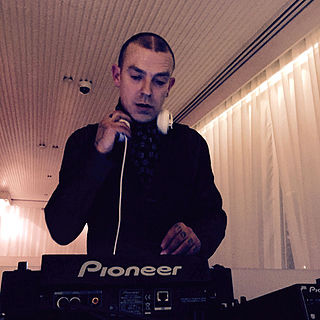
Adam Paul Tinley, known professionally as Adamski, as well as Sonny Eriksson, is an English DJ, musician, singer and record producer, prominent at the time of acid house for his tracks "N-R-G" and "Killer", a collaboration with Seal, which was a No. 1 song in the UK in 1990.
Altern 8 is a British electronic music act, comprising Mark Archer and Chris Peat, until Peat left the group in 1994. Best known in the early 1990s, their trademark was electronic rave music with a heavy bass line. Notable Altern 8 tracks included "Activ 8", "E-Vapor-8", "Frequency", "Brutal-8-E", "Armageddon", "Move My Body", "Hypnotic St8" and "Infiltrate 202".
Ambient house is a downtempo subgenre of house music that first emerged in the late 1980s, combining elements of acid house and ambient music. The genre developed in chill-out rooms and specialist clubs as part of the UK's dance music scene. It was most prominently pioneered by the Orb and the KLF, along with artists such as Global Communication, Irresistible Force, Youth, and 808 State. The term was used vaguely, and eventually fell out of favor as more specific subgenres were recognized.
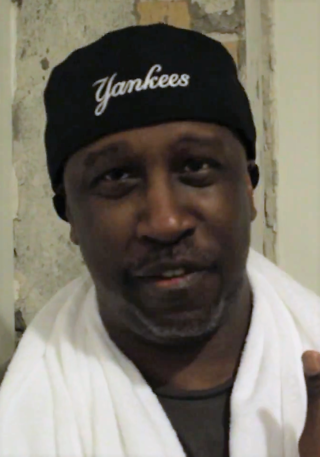
Todd Norton Terry is an American DJ, record producer and remixer in the genre of house music. His productions helped define the New York house scene in the 1990s and used extensive samples that blend the sounds of classic disco, the Chicago house sound, and elements of hip-hop. He has remixed a wide variety of artists.
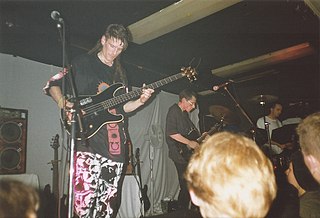
The Shamen were a Scottish psychedelic band, formed in 1985 in Aberdeen, who became a chart-topping British electronic dance music act by the early 1990s. The founding members were Colin Angus, Derek McKenzie and Keith McKenzie. Peter Stephenson joined shortly after to take over on keyboards from Angus. Several other people were later in the band. Angus then teamed up with Will Sinnott, and together they found credibility as pioneers of rock/dance crossover. When rapper Mr. C joined, the band moved on to international commercial success with "Ebeneezer Goode" and their 1992 Boss Drum album.

"Voodoo Ray" is the debut single by British electronic musician Gerald Simpson, recording under the name A Guy Called Gerald. The single was released in the UK in 1988 on the 7" and 12" vinyl formats, on the Rham! label. A version of the track appeared on A Guy Called Gerald's 1988 album Hot Lemonade, and the original single was later released in the United States in 1989 by Warlock Records.

David Hentschel is an English recording engineer, film score composer and music producer who engineered on George Harrison's All Things Must Pass and Elton John's Goodbye Yellow Brick Road, as well as for such artists as Genesis, Tony Banks, Ringo Starr, Queen, Nazareth, Marti Webb, Andy Summers, Mike Oldfield, Renaissance, Peter Hammill and Ronnie Caryl.

"Killer" is a song by British DJ and record producer Adamski. It was written by Adamski and British singer-songwriter Seal, who also provided vocals, although the original release is credited solely to Adamski. It was released in March 1990 by MCA Records as the first single from Adamski's second album, Doctor Adamski's Musical Pharmacy (1990), and reached number one on the UK Singles Chart. The single spent four weeks at the top in May and June 1990 and sold over 400,000 copies in the UK, earning it gold certification. It also reached number one in Belgium and Zimbabwe and number two in the Netherlands and West Germany.

McBride & the Ride is an American country music band consisting of Terry McBride, Ray Herndon, and Billy Thomas. The group was founded in 1989 through the assistance of record producer Tony Brown. McBride & the Ride's first three albums — Burnin' Up the Road, the gold-certified Sacred Ground, and Hurry Sundown, released in 1991, 1992, and 1993, respectively — were all issued on MCA Nashville. These albums also produced several hits on the Billboard country charts, including the Top 5 hits "Sacred Ground", "Going Out of My Mind", "Just One Night", and "Love on the Loose, Heart on the Run".

The Ensoniq SQ-80 is a digital/analog synthesizer manufactured from 1987 to 1989. It was Ensoniq's update to its first synth, the Ensoniq ESQ-1.
Big beat is an electronic music genre that usually uses heavy breakbeats and synthesizer-generated loops and patterns – common to acid house/techno. The term has been used by the British music industry to describe music by artists such as The Prodigy, the Chemical Brothers, Fatboy Slim, the Crystal Method, Propellerheads, Basement Jaxx and Groove Armada.

Acid house is a subgenre of house music developed around the mid-1980s by DJs from Chicago. The style is defined primarily by the squelching sounds and basslines of the Roland TB-303 electronic bass synthesizer-sequencer, an innovation attributed to Chicago artists Phuture and Sleezy D circa 1986.
Techno is a genre of electronic dance music which is generally produced for use in a continuous DJ set, with tempos being in the range from 120 to 150 beats per minute (BPM). The central rhythm is typically in common time (4/4) and often characterized by a repetitive four on the floor beat. Artists may use electronic instruments such as drum machines, sequencers, and synthesizers, as well as digital audio workstations. Drum machines from the 1980s such as Roland's TR-808 and TR-909 are highly prized, and software emulations of such retro instruments are popular.

Doctor Adamski's Musical Pharmacy is the first studio album, second album overall, by English acid house DJ and record producer Adamski, released in 1990 on MCA Records. It includes the UK number one single "Killer", featuring singer Seal on vocals, which was also a top 10 hit worldwide, plus an extended version of the previous single "N-R-G" and follow-up singles "The Space Jungle" and "Flashback Jack".

Happy 2b Hardcore is a DJ mix album by Canadian DJ Anabolic Frolic. It was released in 1997 on American breakbeat label Moonshine Music and is the first series in Frolic's Happy 2b Hardcore series of DJ mix albums, documenting the emergence of happy hardcore music in the United Kingdom and Europe. The series itself is a spin-off of Moonshine's Speed Limit 140 BPM+ series of fast-tempo dance music compilations. The album was conceived to introduce American audiences to happy hardcore, and contains sixteen of the genre's anthems which carry many of happy hardcore's defining characteristics, such as fast tempo, frantic breakbeats, major key tonality, off-kilter, quirky keyboard effects and "semi-melodies."
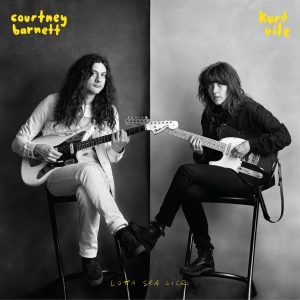
Lotta Sea Lice is a collaborative studio album between Courtney Barnett and Kurt Vile, released on October 13, 2017, on Matador, Marathon Artists and Milk! Records. The album has received positive critical reviews.
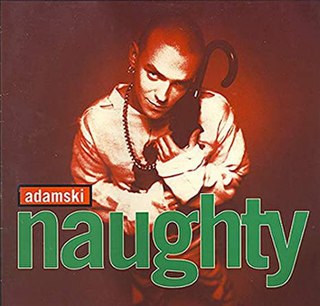
Naughty is the second studio album, third album overall, by English acid house DJ and record producer Adamski, released in 1992 on MCA Records. It includes the single "Never Goin' Down!", featuring Jimi Polo, which was backed as a double A-side with "Born to Be Alive!", featuring Soho, plus the singles "Get Your Body!", featuring Nina Hagen, and "Back to Front".

















